Electrical distribution architecture
HECATE develops an optimised architecture of the electrical distribution for future hybrid or fully electric regional aircraft.
Two preliminary architectures are evaluated:
- An electrical architecture based on batteries/fuel cells.
- An electrical architecture segregated for propulsion and distribution.
The architectures provide adaptability of the technology bricks to potential platform changes and focus exclusively on electrical distribution.
The particularities of the propulsion architecture will be agreed with HERA, HE-ART and AMBER projects and adapted as required within the HECATE project.
In HECATE, the distribution is divided in three parts:
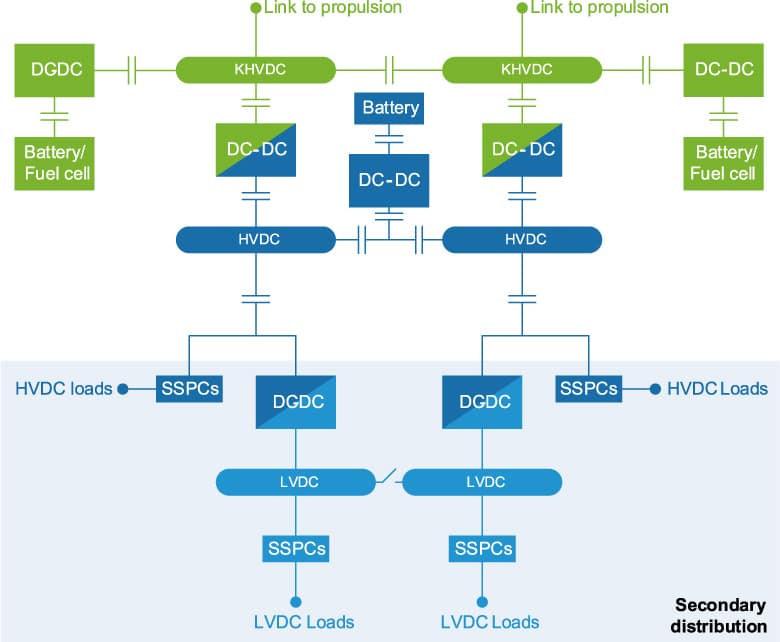
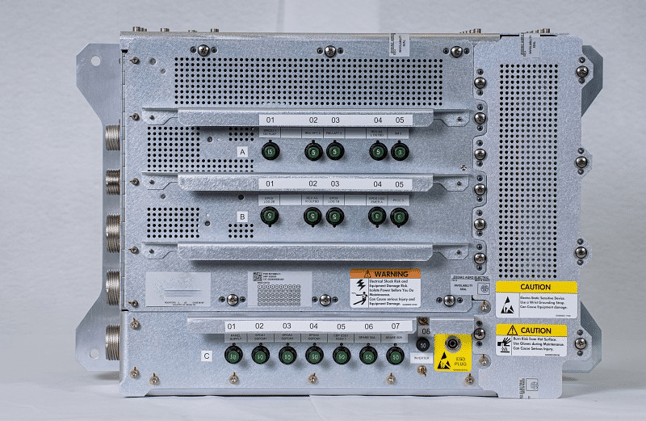
Contactor (©Cyril Abad – CAPA pictures- Safran)
Primary distribution
The step change to hybrid electric propulsion requires the primary distribution to supply power to the electrical propulsion system. In order to meet stringent aviation safety constraints, it is necessary to develop different types of components capable of protecting the network under high voltage and high current.
The electrical components are required to be lighter and more compact for the primary distribution, which is fundamental to enable Hybrid Electric Regional Aircraft.
HECATE defines:
- Electromechanical contactors for KHVDC
- Solid state switches for high power with SIC technology
- Pyro-fuse for high breaking capability
- Insulation Monitoring device
This workflow also considers the development of Power Electronic Module, a model of the breaking components and an algorithm for health monitoring.
Secondary distribution
For next-generation aircraft platforms, there is an essential requirement for higher voltage and higher power distribution components that satisfy safety and functional requirements while optimizing power-density, efficient control, and power management. The overall secondary distribution system needs to fulfil an extended range of functions and characteristics such as flexibility, reconfigurability, prognostics and health management.
HECATE investigates the following topics:
- Lightweight SSPCs, for HVDC and LVDC systems, with the focus on high-voltage phenomena and innovative manufacturing methods to support power-density and cost optimization
- Control methodologies for the aggregated secondary distribution system
- PHM functionality specific for distribution systems and associated failure mechanisms
- Digital SSPM Model
Additional focus is directed towards the integration of the secondary distribution technology in the overall distribution system, both physically in the copper bird demonstrator, but also through the development of digital twins that enable an aggregated functional and life-cycle analysis.

Secondary Power Distribution Unit (©Collins Aerospace )

Solide State Power Module (©Collins Aerospace)
Copyright
The content and works on these pages created by the site operators are subject to German copyright law. The duplication, processing, distribution and any kind of exploitation outside the limits of copyright require the written consent of the respective author or creator. Downloads and copies of this site are for private, non-commercial use only.
As far as the contents on this side were not created by the operator, the copyrights of third parties are considered. In particular, contents of third parties are marked as such. Despite this, should you still be aware of a copyright infringement, we ask to be informed. Upon notification of violations, we will remove such content immediately
Power conversion
Power conversion is a critical part of the electrical distribution architecture to ensure power is delivered at the required voltage levels within electrical distribution and to the loads. The configuration of power converters depends on the selected architecture, the definition of zones within the aircraft, grounding, loads, control methodologies and any other particularities of the electrical distribution system.
HECATE investigates the following power converter activities:
- DC-DC power converters, including battery-based and distribution related converters for KHVDC, HVDC and LVDC
- AC-DC converters for AC power generation to HVDC such as in a hybrid architecture
- Wide-bandgap converters with power mutualization and robust communication links
The methodology will trade-off different topologies, their design, prototyping and testing. Relevant requirements for the power converters will be aligned from the outset with the architecture and safety studies undertaken within HERA and AMBER projects . These requirements will support analysis and development of modular and mutualized converters.
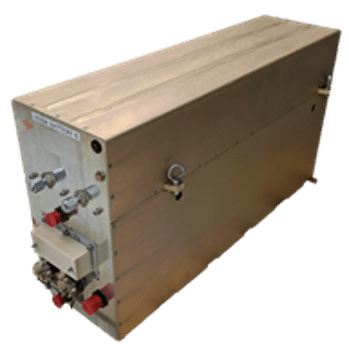
Power conversion (©Collins Aerospace)

Collins Aerospace power converter (©Collins Aerospace)
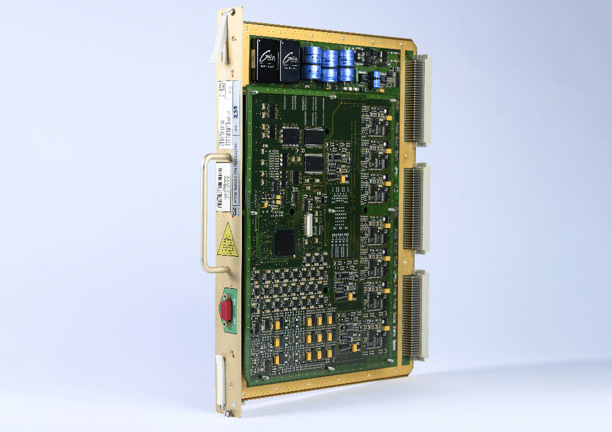
Electronic board (©Christel Sasso – Safran)
Power management and control system
HECATE provides a power management (PM) and control system capable of adapting itself to the flight phases and status through the GSU. An advanced PM strategy ensures the fulfilment of several optimization objectives at the same time during a typical Hybrid Electric Regional Aircraft flight mission. The SLCOM strategy will leverage MPC and AI optimization to optimize the controllers.
Some examples of the optimization objectives are:
- Keep the battery/supercapacitors State of Charge (SOC) above a predefined level, prolonging useful life
- Ensure the generators work around their optimal design point, to increase efficiency and reduce fuel consumptions
- Minimize the load shedding, particularly for higher priority loads, to reduce related transients on the voltage busses hence improving power quality
Cables and connectors
Due to high voltage and high current operation conditions considered in the HECATE architecture, physical constraints such as arcing and partial discharge effects have significant impact on the design of cabling and connectors. Current solutions are not qualified according to aeronautical requirements nor optimized in terms of volume/weight and installation capability in aircraft.
HECATE designs and qualifies high-power cabling and connectors that:
- Comply with the physical constraints due to high-voltage and high power operation, including partial discharge, space charges, fretting, overheating, etc.
- Comply with aeronautical environmental requirements such as thermal, mechanical, and electromagnetic requirements
- Are optimized in terms of volume/weight and installation ability
- Meet the service life requirements
HECATE assesses innovative insulation materials and construction, new conductor configurations, multi-physical dimensioning of next generation harness systems to enable hybrid-electric aircraft.
In this workflow, an optimization of the distribution wiring will be also realized as well as an innovative detection of electric arcs.
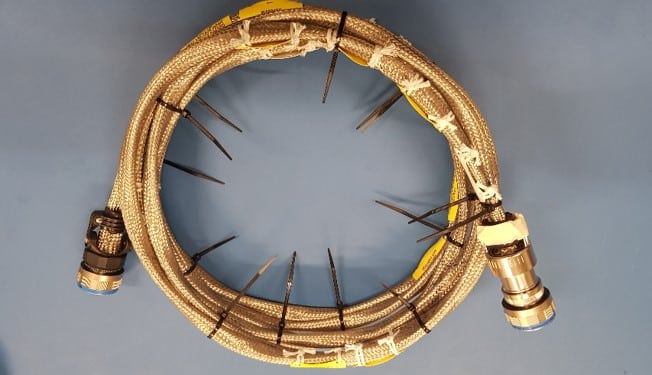
High power cabling (© Safran)
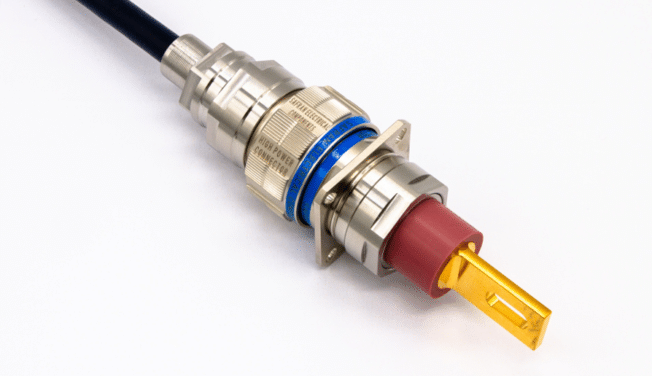
High power components (© Safran)
EMI/EMC
High-voltage power distribution (beyond SoA 230VAC) in aircraft introduces new electromagnetic threats into the power inputs of airborne electronics, as well as in the overall electrical wiring interconnection system (EWIS). Specific risks are di-electrical breakdown at low and even controlled pressure environments and general stresses on the voltage references for electronics that can generate disruptions in power distribution through electrostatic discharges. Additionally, conversion of high-voltage sources into current-driven electromechanical actuations leads to a worsening EM environment prone to generate conducted and even high-frequency radiated EM transients into susceptible electronics.
HECATE digitizes EMI-related data, including wiring topology, for early-stage detection of EM hazards and risks of system architectures. The accuracy of EM models is increased by using novel solvers such as bi-directional multi-transmission and multi-scale line network models.
HECATE also expands the capability to use EM modelling to support certification efforts, drastically reducing costs needed for physical tests campaigns that are currently used to collect compliance data.
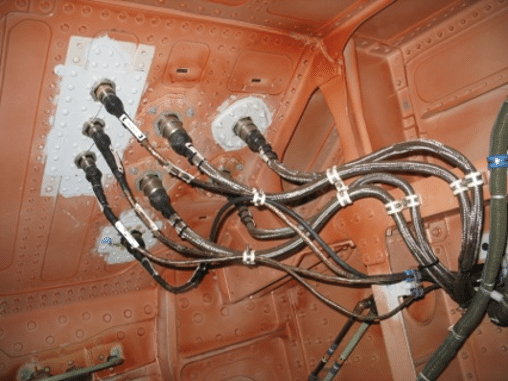
EMI installation (© Airbus Defense and Space)

(© IRT Saint Exupéry) All rights reserved • Confidential and proprietary document
Digital Twin
HECATE provides a Digital Twin (DT) of the electric power distribution and considers all the elements of this distribution in an integrated way. The proposed DT is composed of two main blocks:
- First block is the digital shadow which is the physical model of the electrical power distribution (both components of the primary and the secondary distribution)
- Second block is the Artificial Intelligence (AI) that will monitor the digital shadow to provide online power management for the actual power distribution.
The simplified operation of the DT software can be seen as a loop: the EPD provides input-output observations; data-driven techniques (e.g. calibration, machine learning, data assimilation, …) enhance the models to fit these data (e.g. model substitution, model completion, model parameters calibration, …) while the enhanced models guide the future use of the EPD.
